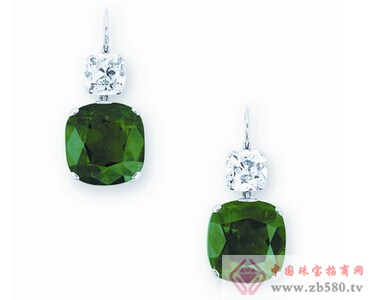As the king of green gemstones, emerald has become a hot "red man" in the jewelry industry and the collection market. The value of the price will be accompanied by the question of true and false, distinguishing between true and false, good or bad, and whether it is natural or artificial, it is the key to the business of emerald pawn.
In the identification of true and false emeralds, we can distinguish similar objects by the characteristics of emerald, such as fluorite, green tourmaline, apatite, green sapphire, calcium garnet containing chrome vanadium, green olivine, green Garnet, green glass and synthetic emeralds.

First, you can use Chelsea filter to observe, red is emerald, green is other natural gemstones; secondly, emerald has low refractive index, no refraction, and gemstones like green diamond have dazzling metallic luster Again, using a magnifying glass to observe the interior, natural emeralds generally have inclusions of solid, liquid, and gas mixed together, while artificial ones are mostly gas or gas-liquid mixed inclusions, often in the form of clouds or plumes. The proportion and refractive index of artificial emeralds are generally low. Such as apatite, although there is a light green color, but its hardness is small, the refractive index is larger, and phosphorescence under ultraviolet light, these are very different from the characteristics of emerald. The garnet is lighter in color, often with a yellow hue. Natural emeralds are often dark, but the yellow hue is not heavy.
The internal colors of natural emeralds are inconsistent, the green tone has undulations, there are more crystallizations in the crystallization, and the hues are more gray; the emeralds that are optimally treated or dyed will be as invariant as a tablet, and the colors are bright and bright.
The distinction between natural emerald and YAG (yttrium aluminum garnet) and green glass lies in: First, natural emeralds are mostly flawed and cracked, and most of them are "cotton", sometimes with some black mineral inclusions. Impurities. The interior of the artificial garnet is generally clean and occasionally air bubbles. Secondly, emeralds are visible in dichroism. Many natural gemstones not only refract light entering it, but also refract light with two slight deviations in speed and polarity, called birefringence. Many colored gemstones include emeralds. Ruby and the like all have this trait. Only the artificial yttrium aluminum garnet has a higher refractive index, while the emerald can be directly measured at 1.575 to 1.583. Birefringent gems produce beautiful and interesting vision, which is why some emeralds look slightly blue or yellowish, and some rubies have a slight purple and slightly orange hue.
Green man-made glass is most similar to emerald, and it can achieve a degree of chaos in both color and appearance. Air bubbles in the man-made glass or some other residual material can create an appearance similar to a crack or fingerprint-like inclusion, but the artificial glass lacks the emerald green emerald feel. People who are more familiar with emeralds will have doubts about the glass at the first observation of the sample, but some yellow-green or blue-green emeralds, when the color is lighter, the green fluff is not strong. Not easy to distinguish from artificial glass.
How to distinguish between natural emeralds and synthetic emeralds? First, the natural emerald's refractive index is generally between 1.57 and 1.59, while synthetic emeralds tend to have a low refractive index, generally less than 1.57, with exceptions. Secondly, the natural emerald has a large proportion, generally greater than 2.7, while the emerald synthesized by the fusion method has a specific gravity of only 2.65 to 2.66. However, it should be noted that the hydrothermally synthesized emerald also has a higher proportion.
Again, most of the natural emeralds have enamel and three-phase inclusions, needle-like, columnar, granular crystalline mineral inclusions, etc. The synthetic emeralds tend to be relatively clean, and the hydrothermally synthesized emerald inclusions are "window-like" The melted synthetic emerald inclusions are in the form of bread crumbs. Finally, natural emeralds are slower to react under ultraviolet light, or dark red, while synthetic emeralds tend to glow red. This test should generally be compared to the standard.
In addition, there are many forms of jewels, which can be divided into two or three layers. The most common ones are emerald and beryl, emerald or beryl and green man-made glass, red garnet and green man-made glass, and colorless crystal plus one. Layer green material and colorless crystal. The top is usually emerald or beryl, and is lined with various green materials such as man-made glass, synthetic emerald, light-colored beryl, etc., which can be glued with colorless or green glue.
tent
Advertising Tent,Advertising Outdoor Tent,Advertising Canopy Tents,Portable Event Outdoor Advertising Tent
Anhui LiSheng prinbanner co.,Ltd , https://www.anhuiprintbanner.com